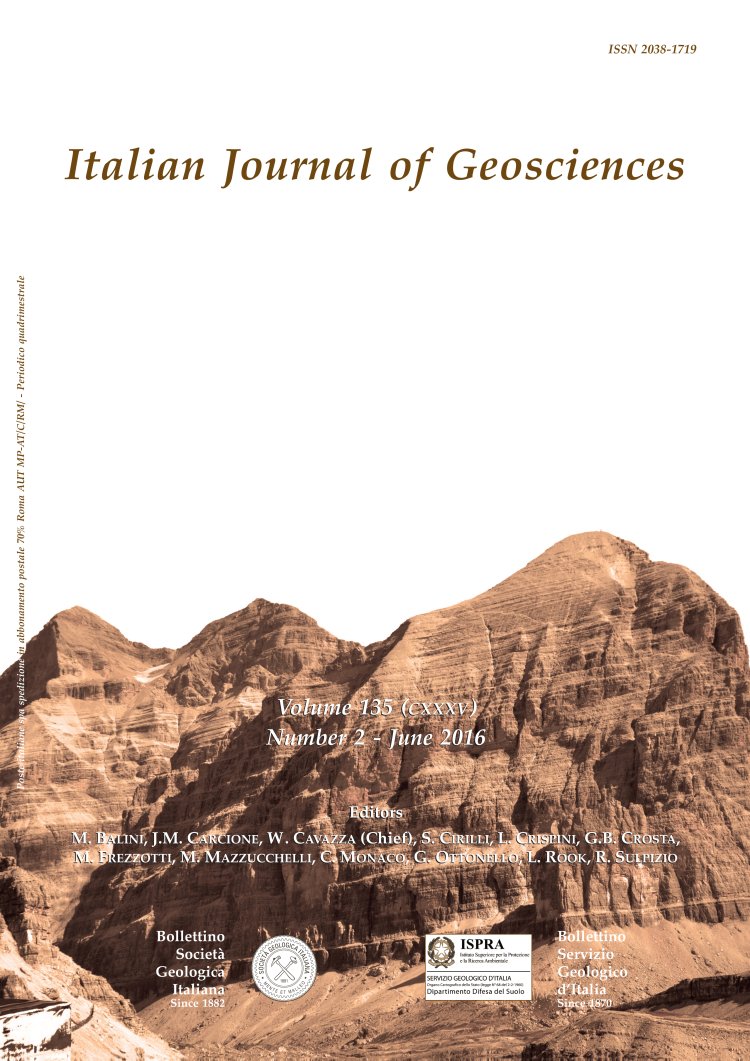
Pseudotachylytes of the Tonale nappe (Italian Alps): petrogenesis, 40Ar-39Ar geochronology and tectonic implications
Silvana Martin (*), Gaston Godard (**), Marinella A. Laurenzi (***) & Alfio Viganò (****)
(*) Dipartimento di Geoscienze, Università degli Studi di Padova, Via Gradenigo, 6 - 35100 Padova, Italy.
(**) Institut de Physique du Globe de Paris, Sorbonne Paris Cité, Université Paris-Diderot, UMR 7154 CNRS, 1 rue Jussieu, F-75238- Paris cedex 05, France.
(***) Istituto di Geoscienze e Georisorse, CNR, Via G. Moruzzi, 1 - 56124 Pisa, Italy.
(****) Sezione Centro di Ricerche Sismologiche, Istituto Nazionale di Oceanografia e di Geofisica Sperimentale, Via Treviso, 55 - 33100 Udine, Italy. Corresponding author e-mail: alfio.vigano@retesismicatrento.org; tel: +39 0461 492585; fax: +39 0461 492525.
Volume: 135 (2016) f.2
Pages: 217-235
Abstract
Pseudotachylyte veins of the Tonale nappe (NE Italy) occur along faults and shear zones which accommodated the deformation that shortened the Adriatic crust to the north of the Periadriatic Lineament during the late Alpine orogeny. These veins are characterized by thin glass layers showing variable clast content and colours, coupled with chemical variations. They are derived from surrounding gneiss, but mass-balance studies show some quartz missing in the veins (i.e., 1 rock = a vein + b quartz, with b ranging from 0.1 to 0.3). Thermodynamic modelling of the melting process indicates that the energy necessary to melt 1 cm3 of rock is 4-5 kJ. Temperature reached inhomogeneous values between ~1100°C (total melting of micas) and ~1700°C (partial melting of the quartz clasts). The modelling of the cooling process accounts well for the microlite blastesis in the glassy groundmass of the veins, provided that the pressure at which pseudotachylytes formed along faults/shear zones ranges between 4 and 8 kbar. 40Ar-39Ar laser-probe in-situ data show that vein zoning corresponds to a range of apparent ages. Step-heating analyses indicate the presence of components younger and older than the age proposed for the vein, due to alteration and clasts, respectively. Interplay between these two factors affects the in-situ data. The new 40Ar-39Ar ages of the Tonale nappe pseudotachylytes (~50-21 Ma), as compared to previously published data, testify a long-lived deformation lasting from Eocene to Early Miocene. The peak of this deformation is Late Eocene-Early Oligocene in age (~35-30 Ma), coeval with the emplacement of the Northern Adamello plutons and of several apophyses and dykes in the Adriatic crust.
Keywords
Get Full Text Supplementary Material